Related Research Articles

Paul Vixie is an American computer scientist whose technical contributions include Domain Name System (DNS) protocol design and procedure, mechanisms to achieve operational robustness of DNS implementations, and significant contributions to open source software principles and methodology. He also created and launched the first successful commercial anti-spam service. He authored the standard UNIX system programs SENDS, proxynet, rtty and Vixie cron. At one point he ran his own consulting business, Vixie Enterprises.
A cypherpunk is any individual advocating widespread use of strong cryptography and privacy-enhancing technologies as a route to social and political change. Originally communicating through the Cypherpunks electronic mailing list, informal groups aimed to achieve privacy and security through proactive use of cryptography. Cypherpunks have been engaged in an active movement since at least the late 1980s.
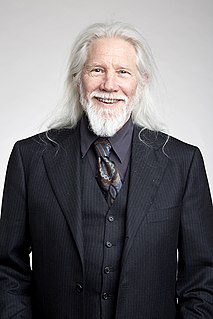
Bailey Whitfield 'Whit' Diffie, ForMemRS, is an American cryptographer and one of the pioneers of public-key cryptography along with Martin Hellman and Ralph Merkle. Diffie and Hellman's 1976 paper New Directions in Cryptography introduced a radically new method of distributing cryptographic keys, that helped solve key distribution—a fundamental problem in cryptography. Their technique became known as Diffie–Hellman key exchange. The article stimulated the almost immediate public development of a new class of encryption algorithms, the asymmetric key algorithms.
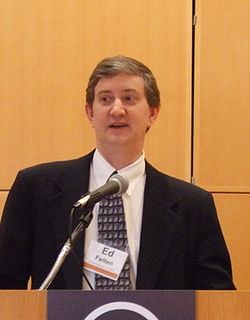
Edward William Felten is the Robert E. Kahn Professor of Computer Science and Public Affairs at Princeton University, where he was also the Director of the Center for Information Technology Policy from 2007 to 2015 and from 2017 to 2019. On November 4, 2010, he was named Chief Technologist for the Federal Trade Commission, a position he officially assumed January 3, 2011. On May 11, 2015, he was named the Deputy U.S. Chief Technology Officer.
Richard Forno is a consultant, lecturer, and writer in the area of Washington, DC.

Dr. Taher Elgamal is an Egyptian cryptographer and entrepreneur. He is recognized as the "father of SSL" for the work he did in computer security while working at Netscape, which helped in establishing a private and secure communications on the Internet.

The Foreign Intelligence Service of the Russian Federation or SVR RF is Russia's external intelligence agency, focusing mainly on civilian affairs. The SVR RF succeeded the First Chief Directorate (PGU) of the KGB in December 1991. The SVR has its headquarters in the Yasenevo District of Moscow.
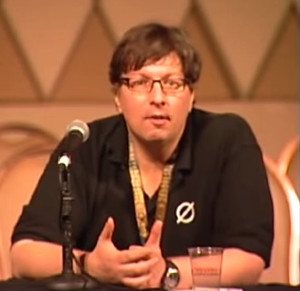
Matt Blaze is an American researcher who focuses on the areas of secure systems, cryptography, and trust management. He is currently the McDevitt Chair of Computer Science and Law at Georgetown University, and is on the board of directors of the Tor Project.
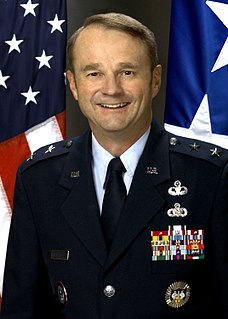
Dr. Dale W. Meyerrose, Major General (Retired) was the first President-appointed, Senate-confirmed Associate Director of National Intelligence/Intelligence Community Chief Information Officer (CIO) and Information Sharing Executive for the Director of National Intelligence (DNI).

Werner Hans Peter Vogels is the chief technology officer and vice president of Amazon in charge of driving technology innovation within the company. Vogels has broad internal and external responsibilities.

Howard Anthony Schmidt was a partner with Tom Ridge in Ridge Schmidt Cyber LLC, a consultancy company in the field of cybersecurity. He was the Cyber-Security Coordinator of the Obama Administration, operating in the Executive Office of the President of the United States. He announced his retirement from that position on May 17, 2012, effective at the end of the month.
Edouard "Ed" Bugnion is a Swiss software architect and businessman.
Silicon Laboratories, Inc. is a fabless global technology company that designs and manufactures semiconductors, other silicon devices and software, which it sells to electronics design engineers and manufacturers in Internet of Things (IoT) infrastructure worldwide.
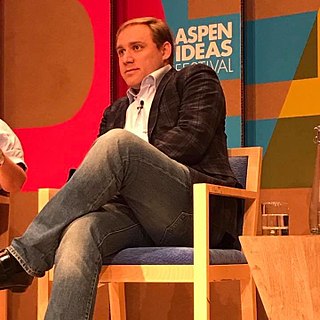
Dmitri Alperovitch is a Russian-born American computer security industry executive. He is co-founder and former chief technology officer of CrowdStrike. In August 2011, as vice president of threat research at McAfee, he published Operation Shady RAT, a report on suspected Chinese intrusions into at least 72 organizations, including defense contractors, businesses worldwide, the United Nations and the International Olympic Committee. Alperovitch is a naturalized American citizen born in Russia who came to the United States in 1994 with his family.
Algebraic Eraser (AE) is an anonymous key agreement protocol that allows two parties, each having an AE public–private key pair, to establish a shared secret over an insecure channel. This shared secret may be directly used as a key, or to derive another key that can then be used to encrypt subsequent communications using a symmetric key cipher. Algebraic Eraser was developed by Iris Anshel, Michael Anshel, Dorian Goldfeld and Stephane Lemieux. SecureRF owns patents covering the protocol and unsuccessfully attempted to standardize the protocol as part of ISO/IEC 29167-20, a standard for securing radio-frequency identification devices and wireless sensor networks.
Dr. Nicholas Nicko van Someren PhD, FREng, FBCS is a British computer scientist, cryptographer and entrepreneur. He is known for having founded ANT Software, and nCipher, as well as for previous roles as chief security architect at Juniper Networks and chief technology officer at Good Technology and the Linux Foundation, where he ran the Core Infrastructure Initiative. He is currently the chief technology officer at Absolute Software Corporation.
Stephen Thomas Kent is an American computer scientist, noted for his contributions to network security.

Michael Waidner is a German computer scientist. He is director of the Fraunhofer Institute for Secure Information Technology and ATHENE, the largest research institute for IT security in Europe. He is also professor of security in information technology at the department of computer science of the Technische Universität Darmstadt.
Edward G. Amoroso is an American computer security professional, entrepreneur, author, and educator based in the New York City area. His research interests have centered on techniques and criteria for measuring trustworthy software development. the application of these methods to secure software development for critical projects in the defense and aerospace industries, and redefining trust parameters for improved security in the cloud. Early on in his career, he was involved with the design of security protections for the Unix operating system in support of the US Government Orange Book security evaluation criteria. This research lead to real-time security design and trusted software protections for the United States Ballistic Missile Defense Program, also known as Star Wars. He has also pioneered concepts related to microsegmentation, a design strategy that allows for the creation of secure zones in data centers and cloud deployments.
References
- ↑ "Derek Atkins Joins SecureRF as Chief Technology Officer".
- ↑ Technical paper on Derek Atkins' Web site
- ↑ "The Assault on 114,381,625,757,888,867,669,235,779,976,146,612,010,218,296,271,242,362,562,561,
842,935,706,935,245,733,897,830,597,123,563,958,705,058,989,075,147,599,290,026,879,543,541" By Gina Kolata The New York Times link Mar 22, 1994